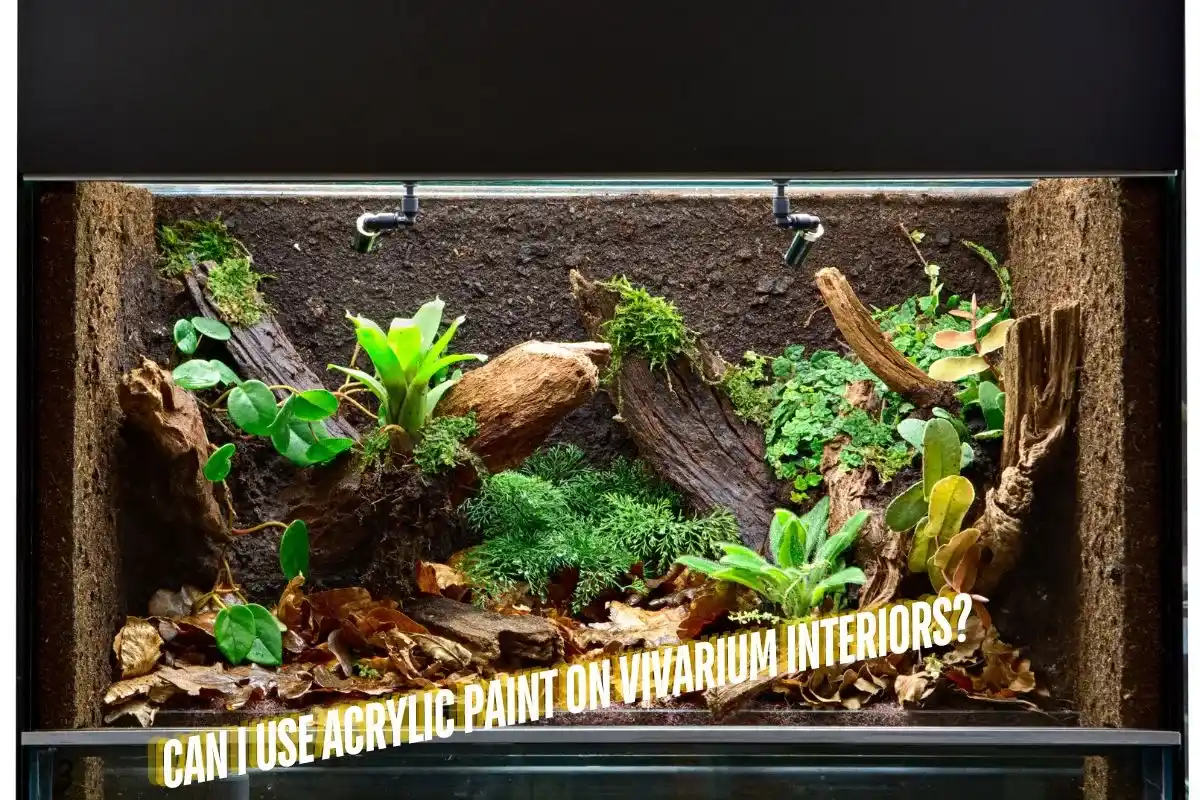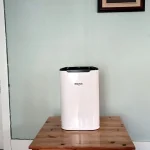If you’re setting up a vivarium for your reptiles, amphibians, or other exotic pets, you’ve probably considered adding some color to the interior. One common question that pops up is whether acrylic paint can be used safely inside a vivarium. The short answer is yes, but there are some important considerations to ensure the safety and well-being of your animals.
This article will guide you through everything you need to know about using acrylic paint in your vivarium, including expert advice, safety tips, and personal insights.
Understanding Acrylic Paint
Acrylic paint is a popular choice for many DIY projects due to its versatility, vibrant colors, and ease of use. It’s water-based, dries quickly, and is generally considered non-toxic when fully cured. However, the environment inside a vivarium can be quite different from your typical painting project. The humidity, temperature, and proximity to animals make it crucial to choose the right type of acrylic paint and apply it correctly.
My First Vivarium Painting Experience
When I first set up my vivarium, I was excited to create a naturalistic background that would mimic a tropical rainforest. I decided to use acrylic paint to achieve the look I wanted. However, I quickly learned that not all acrylic paints are created equal when it comes to safety in a vivarium. After doing some research and consulting with experts, I found that certain precautions were necessary to ensure the paint wouldn’t harm my pets.
Safety First: Choosing the Right Acrylic Paint
When selecting acrylic paint for your vivarium interior, it’s essential to prioritize the safety of your animals. Here’s what to look for:
1. Non-Toxic Formulations
- Expert Opinion: A herpetologist advises, “While acrylic paint can be used on vivarium interiors, it’s crucial to choose non-toxic options and ensure they are thoroughly dried before introducing animals.”
- Look for acrylic paints labeled as non-toxic, which means they don’t contain harmful chemicals like lead or mercury. Brands that specifically mention their suitability for children’s crafts are often a safer choice, as they are less likely to contain harmful substances.
2. Water-Based and Low VOC
- Environmentalist Insight: “Minimize the use of chemicals in your vivarium. Natural materials and non-toxic paints are preferable for the well-being of your animals.”
- Volatile Organic Compounds (VOCs) are chemicals that can be released into the air as paint dries. Low-VOC or VOC-free paints are a better option for a vivarium to minimize the risk of respiratory issues for your pets.
3. Proper Sealing
- Vivarium Designer’s Tip: “Sealing acrylic paint with a non-toxic sealant can help prevent flaking and ensure the paint remains safe for your animals.”
- After the paint has dried, applying a non-toxic sealant can provide an extra layer of protection. It helps prevent the paint from flaking or chipping, which could be ingested by your animals.
Application Tips: How to Safely Use Acrylic Paint in a Vivarium
Applying acrylic paint in a vivarium requires careful preparation and execution. Follow these steps to ensure a safe and durable finish:
1. Surface Preparation
- DIY Enthusiast Advice: “Consider using natural, water-based acrylic paints that are specifically designed for use in enclosures.”
- Start by thoroughly cleaning and drying the surface you plan to paint. This ensures the paint adheres properly and reduces the risk of mold or mildew developing underneath the paint.
2. Layering the Paint
- Apply thin, even layers of paint, allowing each coat to dry completely before adding the next. This helps prevent bubbling or peeling, which can occur if the paint is applied too thickly.
3. Drying Time
- Veterinarian’s Note: “The safety of acrylic paint in a vivarium depends on the specific paint and the animals involved. Consult with a veterinarian for advice tailored to your situation.”
- Ensure the paint is fully cured before introducing your animals to the vivarium. This can take anywhere from a few days to a week, depending on the paint and environmental conditions.
4. Sealing the Paint
- After the paint has dried, apply a non-toxic sealant. This step is crucial to prevent the paint from flaking or leaching chemicals into the vivarium environment.
Considerations for Different Animals
The type of animal you keep in your vivarium can influence the type of paint and the precautions you need to take. Here’s how to approach painting for different types of vivarium inhabitants:
1. Reptiles
- Reptiles, such as lizards and snakes, often require a warm and humid environment. Make sure the paint and sealant you use can withstand these conditions without breaking down.
2. Amphibians
- Amphibians, like frogs and salamanders, are more sensitive to chemicals and changes in their environment. It’s especially important to choose low-VOC paints and allow ample drying and curing time before reintroducing them to the vivarium.
3. Invertebrates
- Invertebrates, such as spiders and insects, are generally less sensitive to paint fumes, but it’s still crucial to ensure the paint is fully dried and sealed before use.
The Importance of Patience
One thing I learned from my own vivarium painting experience is the importance of patience. It’s tempting to rush through the process to see the finished result, but taking the time to properly prep, paint, and cure the interior makes a difference. My vivarium looked fantastic, and my animals remained healthy and happy in their newly decorated home.
Expert Advice: When to Seek Professional Help
If you’re unsure about the safety of using acrylic paint in your vivarium or have concerns about specific animals, it’s always a good idea to consult with a professional:
- Veterinary Clinics: A veterinarian specializing in exotic pets can provide tailored advice based on your specific animals and vivarium setup.
- Herpetological Societies: Organizations like the American Reptile Breeders Association (ARBA) and the International Reptile and Amphibian Show (IRAS) offer resources and forums where you can ask for advice.
- Paint Manufacturers: Some paint brands offer customer service that can answer questions about the suitability of their products for use in vivariums.
Final Thoughts: Is Acrylic Paint Right for Your Vivarium?
Using acrylic paint on your vivarium’s interior can be a safe and effective way to customize your pet’s environment, but it requires careful consideration and proper technique. By choosing non-toxic, water-based paints, allowing sufficient drying and curing time, and sealing the paint with a non-toxic sealant, you can create a beautiful and safe habitat for your animals.
My Vivarium Success
Looking back, the effort I put into researching and applying the right paint paid off. My vivarium not only looks great, but it’s also a safe and healthy environment for my pets. It’s a project I would take on again, and I hope this guide helps you achieve the same success.
So, can you use acrylic paint on a vivarium interior? Absolutely, as long as you follow the steps outlined in this article. With a little patience and attention to detail, you can create a vibrant and safe home for your beloved pets.
Additional Resources:
- Herpetological Societies: Check out organizations like the American Reptile Breeders Association (ARBA) for more information on vivarium care.
- Veterinary Clinics: Consult with a veterinarian for specific advice on the safety of acrylic paint for your pets.
- Online Forums: Join reptile and amphibian communities online for tips and advice from fellow enthusiasts.
- Paint Manufacturers: Research non-toxic paint options from reputable brands to ensure the safety of your vivarium.
This guide provides everything you need to know about using acrylic paint in a vivarium. By following these expert tips and personal insights, you’ll be well on your way to creating a beautiful and safe environment for your pets. Happy painting!










